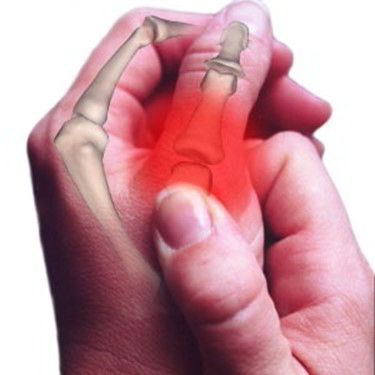The term arthritis covers a big group of inflammatory and degenerative conditions that cause stiffness, swelling and pain in the joints.
Arthritis may be linked with skin diseases for example psoriasis, intestinal ailments like Crohn’s disease and autoimmune disease for example lupus.
What Are The Kinds?
There Are Many Different Kinds Of Arthritis, Each Having Its Own Features.
- The most common kind is a degenerative kind, osteoarthritis, typically changing middle-
Old and elderly individuals in the weight bearing joints – the knees and hips – and after the menopause, the ends of the fingers. Spondylosis is a standard type of osteoarthritis that affects the joints in the spine, mostly the neck (cervical) and lower back (lumbar) areas. - Rheumatoid arthritis results from inflammation in the joints and other body tissues, including the heart, lungs and eyes.
- Another chronic disorder is ankylosing spondylitis, which affects the spinal column and joints between the base of the back and the pelvis. As with rheumatoid arthritis other body tissues, the eyes for example, may be changed. The state eventually causes the vertebrae (the bones of the spinal column) to fuse together, making walking extremely hard.
- Reactive arthritis usually grows in susceptible individuals after they’ve had an illness, most commonly of the genital tract, including non-specific urethritis, or of the intestines, like ulcerative colitis. This type of arthritis most commonly causes inflammation in an ankle or a knee.
- In gout, crystals of uric acid are deposited in a joint, resulting in swelling and pain. Treatment of arthritis is dependent upon the kind. Analgesics and non-steroidal anti-inflammatory drugs (NSAIDs) may help alleviate symptoms. Physiotherapy helps keep joints mobile. Badly damaged joints may have to be surgically replaced with artificial joints.
Living With Arthritis
If you’ve long term arthritis, you might be able to handle your symptoms so that one may keep an active lifestyle. Consult your physician about pain relief and keeping joints mobile. Organizations concerned with arthritis (see useful addresses, p.567) can also supply useful advice.
Self-Help
- If you’re overweignt, likely the most important single thing you can do is lose weight.
- In addition, exercises to increase muscle strength will help stabilize the affected joint and reduce your symptoms.
Exercise
Gentle, regular exercise helps alleviate stiffness and enhance mobility. Physical activity also helps strengthen the muscles that support the joints. But if exercise causes swelling or pain, stop the action and consult
Pain Alleviation
Acute joint pain can be enhanced by using heat or cold to the region. Heat increases blood flow; chilly helps reduce swelling. Both decrease susceptibility to pain.
Specialized Gear
Your physician or a physiotherapist may have the ability to indicate particularly accommodated pieces of gear to help you with household jobs. The gear may have unique characteristics, including handles that are easy to handle or stretching arms to enable you to achieve things without bending down.
- If arthritis limits the motion in your hands, use cutlery with thick handles and glasses with broad shanks which will be easier to handle. A plate with a rim may keep the food from spilling, and a nonslip mat will help hold your plate still during a meal.
- Tongs allow you to pick up items that are out of your reach without bending or stretching. Some kinds of tongs have a trigger mechanism that uses pincers at the end of the arm.
A fixed seat in the shower lets you sit down while you wash. Handrails and a nonslip flooring surface reduce the danger of falls.
Treatment – Joint Replacement
Joints which have been badly damaged by arthritis or injury may be surgically replaced with artificial joints made of metal, ceramic or plastic. Most joints in the body can be replaced, but the common ones are the hips, knees and shoulders. During the surgery, the ends of damaged bones are removed and the artificial parts are fixed in place. The procedure generally alleviates pain and increases the range of movement in the joint.
Hip Replacement
The most often replaced joint is the hip. During the procedure, both the pelvic socket and the head of the thighbone (femur) are replaced. A general anaesthetic is used and it includes a brief stay in hospital. In the first two weeks following the procedure the new joint is shaky and patients must be cautious not to dislocate it during this time.
Other Joints
A variety of kinds of joints in the body can be replaced, from miniature finger joints to big joints including the knees.
Knee Joint Replacement
Most artificial knee joints include metal and plastic implants that cover worn cartilage in the knee; as much of the first joint as possible is maintained. The procedure is performed under a general anaesthetic. A form fitted during the procedure is removed after about five days and the patient can place some weight on the leg after two or three weeks.
Finger Joint Replacement
Man-Made finger joints are made of metal, plastic or silicone rubber and are used to replace damaged joints in the fingers. The procedure is done under a local or general anaesthetic and stitches are generally removed after about 10 days.


 (57 votes, average: 4.86 out of 5)
(57 votes, average: 4.86 out of 5)